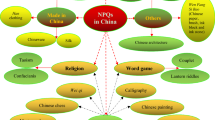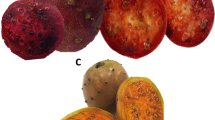Abstract
Background
Tea polyphenols are the prominent component in tea. After the fermentation process, tea polyphenols are oxidized by polyphenol oxidase to form oxidized tea polyphenols (OTPs). OTPs contain a significant amount of hydrophobic phenyl groups that can bind with non-aqueous materials. Here, we determined whether OTPs can bind with lipids and reduce fat uptake and assessed the effect of OTPs on decreasing obesity and alleviating hyperlipidaemia and other metabolic syndromes.
Methods
Rats were divided into three groups: control, high-fat diet (HFD) and OTP groups. The control and HFD groups were fed a chow diet and a high-fat diet, respectively, for 12 weeks; the OTP group was fed a high-fat diet for 6 weeks and then a high-fat diet containing 2 % OTP for 6 weeks. The serum and excrement triglyceride (TAG) and total cholesterol (CHOL) concentrations were determined, and liver tissue and white adipose tissue were collected to detect the expression levels of genes involved in lipid metabolism.
Results
Our results revealed that OTPs failed to decrease the serum concentrations of TAG and CHOL. OTPs alleviated the accumulation of lipids in the liver tissue and changed the expression levels of the regulators of lipid metabolism, i.e., peroxisome proliferation-activated receptors (ppars), compared with the rats fed a high-fat diet alone. We also observed a significantly decreased reduction of weight in the visceral white adipose, enhanced regulation of fatty acid β-oxidation by PPARα and enhanced biosynthesis of mitochondria in the visceral white adipose of the OTP rats compared with the HFD rats. Additionally, OTPs promoted the excretion of lipids.
Conclusion
Our results suggest that OTPs alleviate the accumulation of lipids in liver and visceral white adipose tissue and promote lipid excretion in rats in vivo.







Similar content being viewed by others
References
WHO (2014) Obesity and overweight. http://www.who.int/dietphysicalactivity/media/en/gsfs_obesity.pdf
Stern M (1995) Epidemiology of obesity and its link to heart disease. Metabolism 44:1–3
Bray GA (1996) Health hazards of obesity. Endocrinol Metab Clin North Am 25:907–919
Despres JP, Lemieux I, Prud’homme D (2001) Treatment of obesity: need to focus on high risk abdominally obese patients. BMJ 322:716–720
Godfrey R, Julien M (2005) Urbanisation and health. Clin Med 5:137–141
Qi Y, Hou IC, Fujita H, Yazawa K (2012) Antiobesity effects of Chinese black tea (Pu-erh tea) extract and gallic acid. Phytother Res 26:475–481
Huang HC, Lin JK (2012) Pu-erh tea, green tea, and black tea suppresses hyperlipidemia, hyperleptinemia and fatty acid synthase through activating AMPK in rats fed a high-fructose diet. Food Funct 3:170–177. doi:10.1039/c1fo10157a
Ding Y, Zou X, Jiang X, Wu J, Zhang Y, Chen D, Liang B (2015) Pu-erh tea down-regulates sterol regulatory element-binding protein and stearyol-CoA desaturase to reduce fat storage in Caenorhabditis elegans. PLoS One 10:e0113815. doi:10.1371/journal.pone.0113815
Xiu XT, Wang P, Luo SZ, Luo Y, Hou Y, Shao WF, Yang JH (2010) Effects of Puer tea on hyperlipidemia treatment antioxidation and liver protection in SD rats. Chin Arch Tradit Chin Med 28:2275–2278
Guo SC, Liu HJ, Zhu DN, Yan SJ, Jiang GH, Shen PP, Zhnag WS, Sheng J (2012) Effects and mechanisms of Pu-erh tea on metabolism of cholesterol in hyperlipidemia rats. Sci Sin Vit 42:883–892
Kuo KL, Weng MS, Chiang CT, Tsai YJ, Lin-Shiau SY, Lin JK (2005) Comparative studies on the hypolipidemic and growth suppressive effects of oolong, black, pu-erh, and green tea leaves in rats. J Agric Food Chem 53:480–489. doi:10.1021/jf049375k
Duh PD, Yen GC, Yen WJ, Wang BS, Chang LW (2004) Effects of pu-erh tea on oxidative damage and nitric oxide scavenging. J Agric Food Chem 52:8169–8176. doi:10.1021/jf0490551
Fujita H, Yamagami T (2008) Extract of black tea (pu-ehr) inhibits postprandial rise in serum cholesterol in mice, and with long term use reduces serum cholesterol and low density lipoprotein levels and renal fat weight in rats. Phytother Res 22:1275–1281. doi:10.1002/ptr.2477
Ikeda I, Hamamoto R, Uzu K, Imaizumi K, Nagao K, Yanagita T, Suzuki Y, Kobayashi M, Kakuda T (2005) Dietary gallate esters of tea catechins reduce deposition of visceral fat, hepatic triacylglycerol, and activities of hepatic enzymes related to fatty acid synthesis in rats. Biosci Biotechnol Biochem 69:1049–1053. doi:10.1271/bbb.69.1049
Ito Y, Ichikawa T, Morohoshi Y, Nakamura T, Saegusa Y, Ishihara K (2008) Effect of tea catechins on body fat accumulation in rats fed a normal diet. Biomed Res 29:27–32. doi:10.2220/biomedres.29.27
Suzuki Y, Unno T, Kobayashi M, Nozawa A, Sagesaka Y, Kakuda T (2005) Dose-dependent suppression of tea catechins with a galloyl moiety on postprandial hypertriglyceridemia in rats. Biosci Biotechnol Biochem 69:1288–1291. doi:10.1271/bbb.69.1288
Graham HN (1992) Green tea composition, consumption, and polyphenol chemistry. Prev Med 21:334–350
Gong J, Peng C, Chen T, Gao B, Zhou H (2010) Effects of the theabrownin from pu-erh tea on the metabolism of serum lipids in rats: mechanism of action. J Food Sci 75:H182–H189. doi:10.1111/j.1750-3841.2010.01675.x
Lin CL, Huang HC, Lin JK (2007) Theaflavins attenuate hepatic lipid accumulation through activating AMPK in human HepG2 cells. J Lipid Res 48:2334–2343. doi:10.1194/jlr.M700128-JLR200
Matsumoto N, Okushio K, Hara Y (1998) Effect of black tea polyphenols on plasma lipids in cholesterol-fed rats. J Nutr Sci Vitaminol (Tokyo) 44:337–342
Lin JK, Lin-Shiau SY (2006) Mechanisms of hypolipidemic and anti-obesity effects of tea and tea polyphenols. Mol Nutr Food Res 50:211–217. doi:10.1002/mnfr.200500138
Matsui T, Tanaka T, Tamura S, Toshima A, Tamaya K, Miyata Y, Tanaka K, Matsumoto K (2007) alpha-Glucosidase inhibitory profile of catechins and theaflavins. J Agric Food Chem 55:99–105. doi:10.1021/jf0627672
Miyata Y, Tanaka T, Tamaya K, Matsui T, Tamaru S, Tanaka K (2011) Cholesterol-lowering effect of black tea polyphenols, theaflavins, theasinensin A and thearubigins, in rats fed high fat diet. Food Sci Technol Res 17:585–588
Huang YW, Xu HH, Wang SM, Zhao Y, Huang YM, Li RB, Wang XJ, Hao SM, Sheng J (2014) Absorption of caffeine in fermented Pu-er tea is inhibited in mice. Food Funct 5:1520–1528. doi:10.1039/c4fo00051j
van Diepen JA, Stienstra R, Vroegrijk IO, van den Berg SA, Salvatori D, Hooiveld GJ, Kersten S, Tack CJ, Netea MG, Smit JW, Joosten LA, Havekes LM, van Dijk KW, Rensen PC (2013) Caspase-1 deficiency in mice reduces intestinal triglyceride absorption and hepatic triglyceride secretion. J Lipid Res 54:448–456. doi:10.1194/jlr.M031963
Amato MC, Giordano C, Galia M, Criscimanna A, Vitabile S, Midiri M, Galluzzo A (2010) Visceral Adiposity Index: a reliable indicator of visceral fat function associated with cardiometabolic risk. Diabetes Care 33:920–922. doi:10.2337/dc09-1825
Yamashita Y, Wang L, Tanaka Y, Zhang T, Ashida H (2014) Oolong, black and pu-erh tea suppresses adiposity in mice via activation of AMP-activated protein kinase. Food Funct 5:2420–2429. doi:10.1039/c4fo00095a
Shimamura Y, Yoda M, Sakakibara H, Matsunaga K, Masuda S (2013) Pu-erh tea suppresses diet-induced body fat accumulation in C57BL/6J mice by down-regulating SREBP-1c and related molecules. Biosci Biotechnol Biochem 77:1455–1460. doi:10.1271/bbb.130097
Hou Y, Shao W, Xiao R, Xu K, Ma Z, Johnstone BH, Du Y (2009) Pu-erh tea aqueous extracts lower atherosclerotic risk factors in a rat hyperlipidemia model. Exp Gerontol 44:434–439. doi:10.1016/j.exger.2009.03.007S0531-5565(09)00062-X
Cao ZH, Gu DH, Lin QY, Xu ZQ, Huang QC, Rao H, Liu EW, Jia JJ, Ge CR (2011) Effect of pu-erh tea on body fat and lipid profiles in rats with diet-induced obesity. Phytother Res 25:234–238. doi:10.1002/ptr.3247
Chiang CT, Weng MS, Lin-Shiau SY, Kuo KL, Tsai YJ, Lin JK (2005) Pu-erh tea supplementation suppresses fatty acid synthase expression in the rat liver through downregulating Akt and JNK signalings as demonstrated in human hepatoma HepG2 cells. Oncol Res 16:119–128
Mashek DG (2013) Hepatic fatty acid trafficking: multiple forks in the road. Adv Nutr 4:697–710. doi:10.3945/an.113.004648
Miyata Y, Tamaru S, Tanaka T, Tamaya K, Matsui T, Nagata Y, Tanaka K (2013) Theflavins and theasinensin A derived from fermented tea have antihyperglycemic and hypotriacylglycerolemic effects in KK-A(y) mice and Sprague–Dawley rats. J Agric Food Chem 61:9366–9372. doi:10.1021/jf400123y
Acknowledgments
This work was supported by the Natural Science Foundation of China (Nos. 31460392 and 31260196) and the Natural Science Foundation of Yunnan Province (Nos. 2012FB151 and 2014FB180).
Author information
Authors and Affiliations
Corresponding authors
Ethics declarations
Conflict of interest
The authors declare that there is no conflict of interest regarding the publication of this manuscript.
Additional information
Sumin Wang and Yewei Huang have contributed equally to this work.
Rights and permissions
About this article
Cite this article
Wang, S., Huang, Y., Xu, H. et al. Oxidized tea polyphenols prevent lipid accumulation in liver and visceral white adipose tissue in rats. Eur J Nutr 56, 2037–2048 (2017). https://doi.org/10.1007/s00394-016-1241-x
Received:
Accepted:
Published:
Issue Date:
DOI: https://doi.org/10.1007/s00394-016-1241-x




